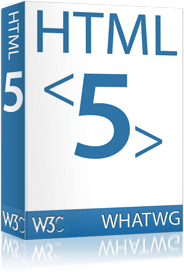W3C Releases 7 HTML-related Documents
 The W3C has announced today that it has published seven documents related to HTML. I’m going to cheat and just bring in their description:
The W3C has announced today that it has published seven documents related to HTML. I’m going to cheat and just bring in their description:
- HTML 5 and HTML5 differences from HTML4. In addition, some content that was part of the HTML 5 specification has been published in two new standalone drafts: HTML Canvas 2D Context and HTML Microdata.
- HTML: The Markup Language, a first draft. This document describes the HTML markup language and provides details necessary for producers of HTML content to create documents that conform to the language. By design, it does not define related APIs, nor attempt to specify how consumers of HTML content are meant to process documents, nor attempt to be a tutorial or “how to” authoring guide.
- HTML+RDFa, which defines rules and guidelines for adapting the RDF in XHTML: Syntax and Processing (RDFa) specification for use in the HTML5 and XHTML5 members of the HTML family.
- Additional Requirements for Bidi in HTML, a first draft. Authoring a web app that needs to support both right-to-left and left-to-right interfaces, or to take as input and display both left-to-right and right-to-left data, usually presents a number of challenges that make it an especially laborious and bug-prone task. Some of these are due to browser bugs, but some can be traced to a gap in the specification of the bidirectional aspects of a given HTML feature. And some of these challenges could be greatly simplified by adding a few strategically placed new HTML features. This document proposes fixes for some of the most repetitive pain points.
Don’t let this trick you into thinking that HTML5 is official. It’s not. HTML5 is still a draft. Let me repeat. HTML5 is still a draft. However, knowing the direction of HTML5 will make it easier for you to implement it, convert sites, and ultimately convert your existing skills. If you are already building sites using this draft of HTML5 for a browser market that doesn’t yet support it, then good for you. Regardless, the two documents that you should pay attention to as you go down this path are HTML5 differences from HTML4 (W3C Working Draft 04 March 2010) and HTML: The Markup Language (W3C Working Draft 4 March 2010).
Related post:
- Too Soon to Advocate HTML5?, posted on this very blog.
One Comment
All I did was paste the release. I suspect your comment is a method to push your India-based services, keying off the brand recognition of the W3C by using it in your name. Usually I'd delete such an obvious spam comment, but since you offer copywriting services, clearly to an English speaking market, I thought others might enjoy the quality of the copy on your home page.
Leave a Comment or Response